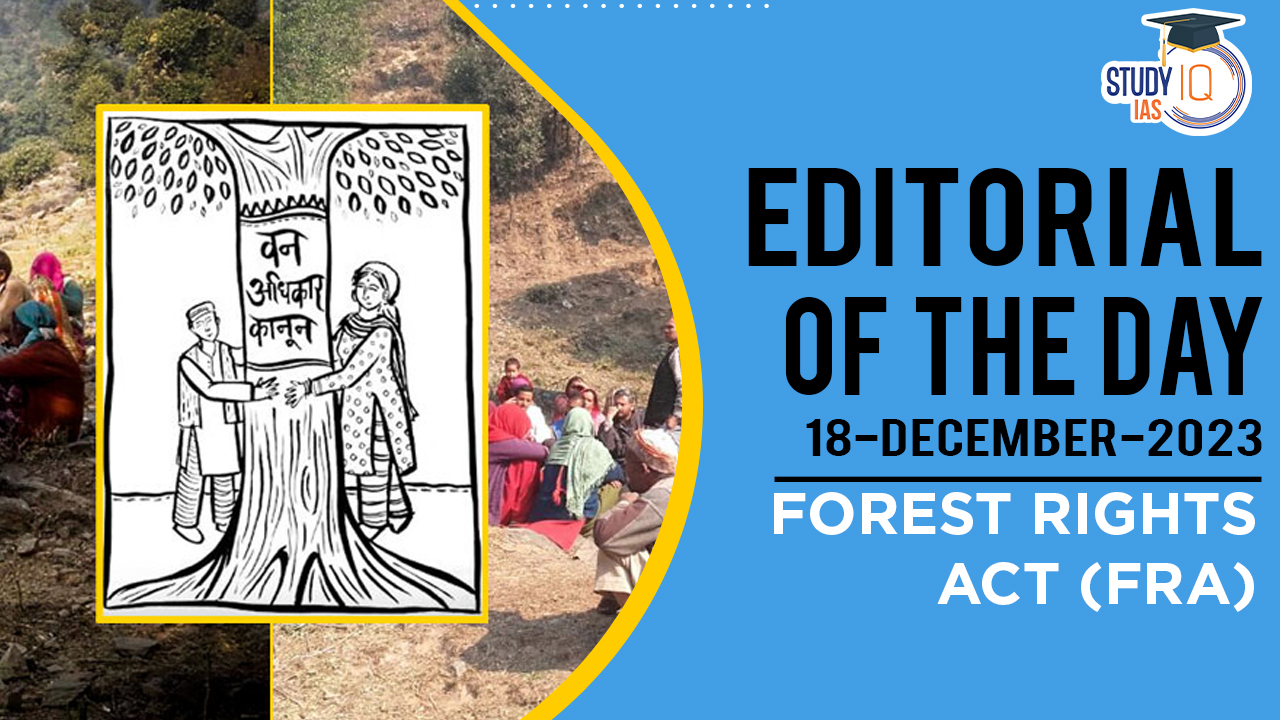Table of Contents
Context: 17 years post-enactment, the Forest Rights Act (2006), aimed at resolving forest encroachments and historical injustices for forest communities, largely falls short in delivering justice and democratic governance.
Historical Injustices Faced by Forest Dwellers and the Forest Rights Act
Colonial Legacy
The Indian Forest Act of 1878 vested ownership of all Indian forests in the British, prioritising revenue generation and treating them as state property. This led to:
- Ban on shifting cultivation: A traditional livelihood practice for many communities.
- Biased land surveys: Dispossessing communities of their customary lands.
- Forced labour: Exploiting forest communities for forest-related work.
- Restricted access to forest resources: Limiting their utilisation of traditional forest products.
We’re now on WhatsApp. Click to Join
Post-Independence Challenges
- Inclusion of Princely states and Zamindari estates: Further consolidated state control over forest areas.
- Land leases for “Grow More Food” initiatives: Left communities vulnerable by displacing them.
- Construction of Dams: Resulted in displacement and encroachment on other forest areas.
- Wildlife (Protection) Act 1972 and Forest (Conservation) Act 1980: Perpetuated the colonial model of state ownership and led to forced relocations for protected areas.
- Developmental Projects: Diverted forest lands without community consent, impacting their traditional practices.
Addressing Injustices through the Forest Rights Act (FRA)
- Encroachment recognition: Recognizes Individual Forest Rights (IFRs) for habitation and cultivation, converting forest villages into revenue villages with full rights.
- Access and Control: Grants communities rights to utilise forests, own and sell minor forest produce, and manage forests within their boundaries, even extending to protected areas.
- Balanced Conservation and Community Rights: Creates a democratic process to balance wildlife conservation goals with community needs.
- Supreme Court Judgment in Niyamgiri case: Empowers communities with veto power over proposals to divert forests for other purposes, despite attempts by some to bypass this right.
Challenges in Implementation of the Forest Rights Act (FRA)
- Politicisation: Some states prioritise individual rights and frame the FRA as an “encroachment regularisation” scheme, potentially encouraging illegal cultivation.
- Bureaucratic Obstacles: Forest Department resistance and technology misuse hinder IFR recognition.
- Difficulties in Claiming Processes: Claimants face rejections due to faulty processes and arbitrary decisions.
- Digital Exclusion: Initiatives like VanMitra software exacerbate existing inequalities in areas with limited connectivity and literacy.
Progress in some states
- Maharashtra, Odisha, and Chhattisgarh have actively implemented Community Forest Rights (CFRs), with Maharashtra even de-nationalizing minor forest produce in Scheduled Areas, empowering villages to manage their own forests.


 Operation Baam: Baloch Separatist Group ...
Operation Baam: Baloch Separatist Group ...
 National Register of Indian Citizens (NR...
National Register of Indian Citizens (NR...
 World Population Day 2025, Themes, Histo...
World Population Day 2025, Themes, Histo...





















